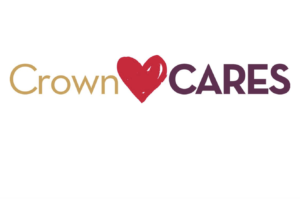Standards Spotlight: Mastering Reading Standard 2

Ray Reutzel
I remember my first experience teaching reading comprehension skills to my third grade students in rural Wyoming, even though it was years ago. Three of the top comprehension skills in those days were “Getting the Main Idea,” “Finding the Details,” and “Summarizing.” I was simultaneously pursuing a Master’s degree in reading because, honestly, I was baffled and flummoxed by the process of teaching reading comprehension. It was there that I encountered the writings of Dolores Durkin. She condemned practically everything I was doing by asserting that my instructional activities weren’t teaching children how to comprehend, but rather assessing if they could comprehend. That was one of the first wake up calls.
The next wake up call came from Patricia Alexander—one of the first to discuss the difference between skills and strategies. Skills are automatic behaviors that result from the conscious, somewhat wearisome application of strategies that become no longer necessary. Strategies, on the other hand, are steps or plans in the mind that must be consciously and somewhat laboriously applied, at least in the beginning, to become skilled. Strategies, then, are the “how” to accomplish the outcome or skill!
The current Common Core State Standards (CCSS) don’t include mention of comprehension strategies, but they do prescribe the demonstration of typically accepted comprehension skills. For example, Reading: Literature and Reading: Informational Text, Standard R.2, require that students be able to determine the central idea (new verbiage for main idea); recount details; and summarize a text. This is a tall order for a number of reasons:
- Students are required to demonstrate three comprehension skills within one standard.
- The standard provides little guidance for the teacher about how to help children master the combination of these three comprehension skills.
- One of these comprehension skills, summarizing, is considered by many comprehension experts to be one of the most difficult to learn.
The ability to summarize is dependent upon achieving the other two comprehension skills successfully. Achieving the ultimate aims of CCSS R.2 standard is linked to the length of the text and knowledge of the text’s inherent structure and organization. When I discovered this fact, it was so liberating for me as a teacher and for my students. It helped me to see and teach summarization as a systematic process, rather than saying something to my students like, “Well, a summary captures the big ideas in text.”
Here’s an example to illustrate my point.
Planet Earth is made up of three layers. The first layer, a thin rocky skin called the crust, covers it. The very top part of the crust that we walk on every day is composed of soil, sand, and rock. And the low parts of the crust are underwater, below oceans, seas, and lakes. There are two other layers beneath the Earth’s crust called the mantle and the core.
If the goal is to determine the central idea, details, and summary, I should first determine the length or text unit size—in this case, a paragraph. I think, “Central ideas in paragraphs are typically located in the thesis or topic sentence that is typically located at the beginning or occasionally at the end of a paragraph.” I would then read aloud the first and last sentences in this paragraph and ask myself, “Which sentence best tells me about what all the other sentences in the paragraph are telling about?” Once I determine which sentence that is, I mark it as the topic sentence by highlighting or underlining it for students. I next say, “I know the remaining sentences in a paragraph provide added details about the topic sentence.” So, I ask myself, “What are some details about the topic sentence I can find in the remaining sentences?” Next, I highlight key words and phrases in the remaining sentences that give me more information about the topic sentence—crust, top part, soil, sand, and rock, low part, beneath water, mantle, core. After highlighting, I assemble these highlighted words and phrases into a “details” list.
- crust
- top part
- soil, sand, and rock
- low part
- beneath water
- mantle
- core
After I look at my list to see if any words or phrases are used more than once, I remove any repeated words from my list. At this point, I have achieved the goal of identifying the central idea and the details of the paragraph. What is left? I must summarize it. To do this, I combine details in my list with my central idea to write another sentence as a summary. Summaries are usually shorter than the unit size of text to be summarized. This is important to explicitly tell students. A summary for a paragraph will likely consist of the ideas in the detail list combined with the topic sentence into a single sentence, like this:
The Earth is made up of three layers called the crust, the mantle, and the core.
Thinking about R.2 as a function of text unit size and structure substantially alters the way in which teachers teach the three comprehension skills—identifying central ideas, supporting details, and summarizing texts in Common Core Standard R.2. Doing so makes teaching Common Core Standard R.2 a much more systematic process rather than one that has plagued both teachers and students in the past as both difficult and mysterious. So, give it a go with your current Common Core instructional resources. See how thinking about structurally teaching text-related comprehension skills will help you and your students more successfully demonstrate mastery of CCSS R.2!
Learn more about the most challenging standards in reading here.
This blog is part 1 of a 4 part series “Spotlight on ELA: Strategies for Addressing the Most Challenging Standards” sponsored by Curriculum Associates.
 Ray Reutzel is the Emma Eccles Jones Distinguished Professor and Endowed Chair of Early Childhood Education at Utah State University as well as an elected member of the IRA Reading Hall of Fame. Ray is an author on Ready® Common Core, published by Curriculum Associates, and a member of the i-Ready® Technical Advisory Committee. Learn more about the most challenging Common Core reading standards as determined by Curriculum Associate’s i-Ready Diagnostic.
Ray Reutzel is the Emma Eccles Jones Distinguished Professor and Endowed Chair of Early Childhood Education at Utah State University as well as an elected member of the IRA Reading Hall of Fame. Ray is an author on Ready® Common Core, published by Curriculum Associates, and a member of the i-Ready® Technical Advisory Committee. Learn more about the most challenging Common Core reading standards as determined by Curriculum Associate’s i-Ready Diagnostic.







0 Comments
Leave a Comment
Your email address will not be published. All fields are required.